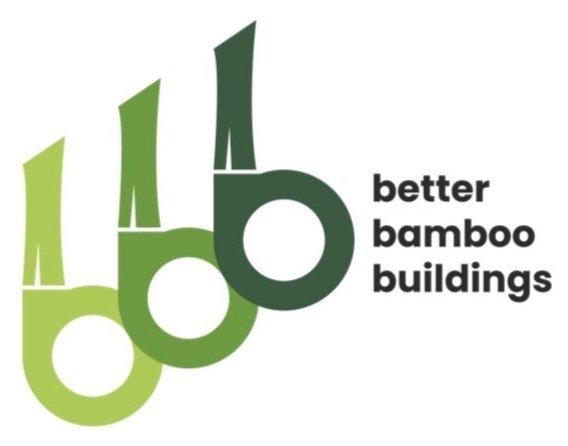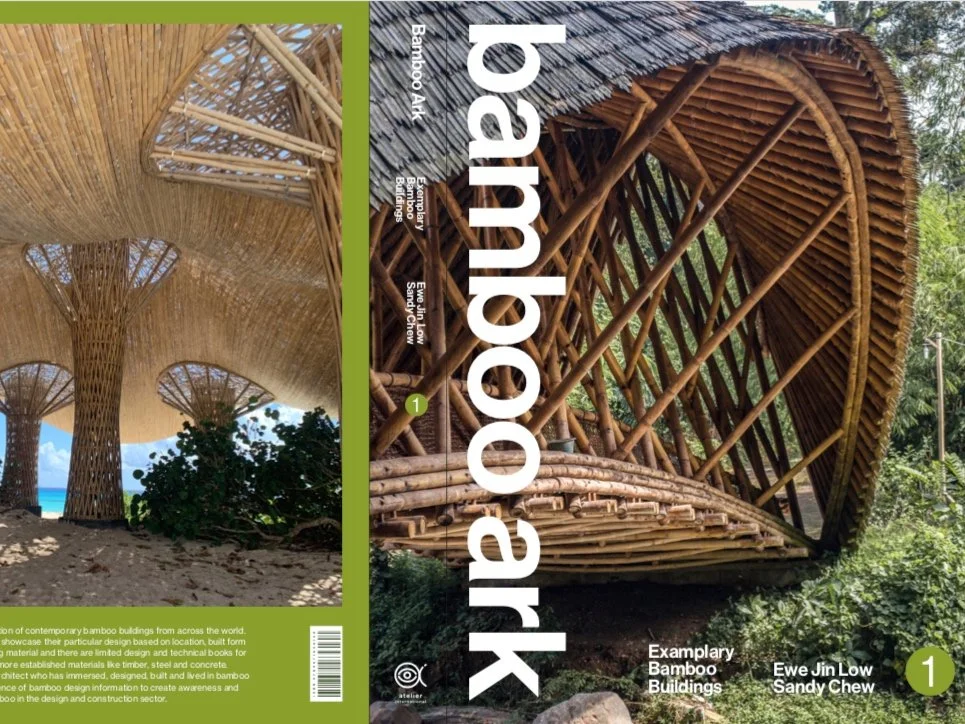Bamboo BOLEH - raising bamboo design and construction in Malaysia
Boleh literally means ‘Can’, or ‘Can Do It’. Malaysia Boleh or ‘Malaysia Can do it’ is a phrase commonly used as an encouragement for the Malaysian spirit, it means to persevere and to excel it what we do. This article is entitled ‘Bamboo Boleh’ as we strive to raise bamboo design and construction to greater heights in Malaysia.
Malaysia is a tropical country situated close to the equator and is home to more than 70 bamboo species with at least 7 or 8 species that are construction suitable. Bamboo is a grass plant that is strong, versatile and regenerative, which means it can be harvested continuously in a sustainable manner. It is a ‘golden grass’ with a thousand uses, including being one of the most sustainable building materials that nature provides. Distinctive features of construction grade bamboo are its hardness after harvesting and treatment, long lengths and thick culm walls that ensures its durability and structural strength. Among the commonly used bamboo in Malaysia are buluh duri (Bambusa blumeana), buluh gading (Bambusa vulgaris), buluh betung (Dendrocalamus asper), buluh beting (Gigantochloa levis), and buluh semantan (Gigantochloa scortechinii).
Challenges for bamboo
Despite its long history in the region, bamboo is often dismissed as a reliable construction material in Malaysia and many South Easy Asian regions. The common misconception is that there are no commercial or environmental benefits in using bamboo for building. With lack of understanding and appreciation, the demand for bamboo buildings is consequently low.
Bamboo currently produced in Malaysia is mainly used in the furniture and handicraft sector, while bamboo as the main component for building construction is still a rarity. In terms of bamboo architecture, there are architects and designers who are keen on designing with bamboo for their aesthetics and sustainability features. However, there is a lack of specialist design know-how, skilled manpower and artisan expertise locally - hence labour is usually brought in from other countries (Indonesia for one) for construction projects. Proper treatment facilities for bamboo culms are also very limited as it is a niche industry. These factors collectively hinder the development of bamboo projects, as it can be costly and tedious for logistical arrangements.
Another major setback is that local building codes and standards have yet to fully recognise bamboo as a proper building material, especially with regards to fire safety. According to the local uniform building by laws (UBBL), bamboo cannot be used to erect a permanent structure, hence all bamboo buildings in Malaysia, whether deemed as formal architecture or otherwise, are categorised as temporary structures. At present, Malaysia has yet to adopt international bamboo standards such as the ISO for bamboo grading and structural requirements. Therefore, effort needs to be taken to familiarise local authorities and certification bodies with the realities and potential of bamboo as a building material, which has been widely accepted by many other countries in the region. Such standard compliance would ensure material quality and increase credibility and confidence towards bamboo.
Figure: Carbon Footprint Over Life Cylce of Bamboo
Source: https://www.bamboomaster.co/the-importance-of-bamboo
There is also an absence of policies to promote the adoption of sustainable building materials, albeit the heightened awareness of the effects of climate change caused by carbon emissions. According to International Energy Association’s 2020 World Energy Statistics and Balances, 38% of global emissions come from the building sector, and 26% of these emissions comes from embodied carbon in buildings. Therefore, in order to have an effective impact on carbon reduction, focus needs to be given to the choice of building materials. In the effort to lower the amount of embodied carbon in the built environment, bamboo presents itself as a greener alternative compared to non-renewable, carbon-intensive materials such as cement and metal.
Opportunities & paths forward
Statement Buildings
Despite the many hurdles, there are plenty of reasons to be optimistic for the future of bamboo in Malaysia. The perception of bamboo can be improved through promotion of well-designed buildings through varied expressions, proving that contemporary architecture and traditional materials are not mutually exclusive, while providing the public an opportunity to experience the uniqueness of being in a bamboo building. Although there are a few notable bamboo projects in Malaysia throughout recent years, more landmark buildings and structures will certainly further elevate the reputation of bamboo.
Bamboo Playhouse (public recreation), Perdana Botanical Gardens, Kuala Lumpur - Ar. Eleena Jamil
Tadom Hill Resort (bamboo resort), Banting, Selangor - Ar. Muhammad Ihsan
Bamboo Ark (demonstrative structure) , APW Bangsar, Kuala Lumpur - Ewe Jin Low
Bamboo Village ( bamboo resort), Hulu Langat, Selangor - Mohd Ramadhan Abdul Hamid
Bamboo Masjid Green Village (place of worship), Kuala Kangsar - Studio WNA
Bamboo Jungle Adventures (resort & bamboo school), Sungai Siput, Perak - Ir. Major Ahmad Mazlan
Masjid Buluh (place of worship), Gua Musang, Kelantan - Ar. Muhammad Ihsan
Bamboo Bridge (bridge), Kuala Lumpur - SEAD Build
Awareness & Design Education
As with any revolution in history, it is the will of the people that would propel the movement forward. In Malaysia, there is a growing network of bamboo enthusiasts, from architects, designers, builders and environmentalists who are working together to improve the perception of this humble grass. It would be ideal to have a platform or organisation representing the interest of the bamboo industry, where best practices from the upstream of bamboo harvesting and treatment, right through the design and construction know-hows, can be streamlined and promoted locally. Building with bamboo can subsequently be incorporated into the formal syllabus of sustainable architecture, instilling more interest for practical applications and to advance academic research. With virtual learning becoming the new norm, there are several online and hybrid courses emphasizing on bamboo design & construction, such as Architectural Association Virtual School, Bamboo U'niversity, and Designing Better Bamboo Buildings that potential bamboo enthusiasts can consider enrolling for.
Bamboo Forestry
A healthy and sustainable bamboo forestry is important for bamboo building projects to succeed. The Bamboo Industry Development Action Plan by the Malaysian Timber Industry Board (MTIB) helped to establish bamboo plantations throughout several states in the past years by providing loans and incentives for bamboo growers to sustainably manage bamboo crops. Model bamboo farms are also being initiated to promote commercial planting of selected species, and to increase public awareness on the use of bamboo as an alternative raw material. The state of Sarawak has also embarked on a bamboo plantation pilot program, with the availability of suitable land and climate, and a wider vision of diversifying into non-timber products. Such initiatives amongst others help to ensure a continuous upstream supply of quality bamboo for domestic and export demands.
Developing Local Talent
Another key component in promoting bamboo for construction is talent development. Building with bamboo requires specific skillsets, and the implementation of a design relies on skilled bamboo artisans and craftsmen. Capacity building programs involving transference of traditional knowledge and expertise in the region can help train up local talents in bamboo construction.
Uplifting Rural Economy
The global pandemic and economic disruption of supply chains have reinforced the value of local production. The Malaysian bamboo industry has the potential to strengthen the local value-chain and subsequently uplift rural economy. Sustainable harvesting of bamboo can further empower the local communities, especially the Orang Asli, who are the indigenous groups residing mainly deep in the forests of Malaysia, where bamboo is central to their culture, traditions and way of life. Bamboo harvesting can be a main source of income to rise above poverty, which rejuvenates rural economy, impacting both the agricultural and industrial sector.
Notable projects in Southeast Asia
Beloved for its organic features, bamboo buildings are riding the waves of eco-conscious developments rising across the Southeast Asian region. From being affordable housing solutions in rural areas to premium tropical getaways, these outstanding bamboo buildings are proving themselves worthy of investment and a testament for sustainable development. The following bamboo projects from our neighbours in the Philippines, Thailand and Vietnam serve as exemplary references for bamboo-abundant Malaysia.
Social Housing by Base Bahay, Philippines
2. Chiang Mai Life Construction
Chiangmai Life Construction (CLC) in northern Thailand designs and builds modern, organic architecture using mainly earth and bamboo as construction materials. The company’s philosophy is to adapt these natural materials to the needs of the 21st century, so up-to-date engineering knowledge is combined with clean organic designs. CLC strives for a balance of functionality, beauty, and sustainability.
Zabb E Lee Cooking School, Chiang Mai, Thailand
Trika Villa, Chiang Mai, Thailand
Bamboo Dome Sala, Chiang Mai, Thailand.
3. Vo Trong Nghia Architects (VTN)
VTN Architects is a firm in Ho Chi Minh city, Vietnam, that focuses on green and sustainable architecture. They see their work as not only to refine the urban environment but also to provide a sense of peace in the world, which is evident in the translation of their designs, where they attempt to safeguard air, water, and earth by choosing eco-friendly building materials and construction practices.
Restaurant in Verdana Resort, Vietnam.
Nocenco Cafe, Vietnam.
Huong An Vian Visiting Center, Vietnam.
The past 5 years has seen many bamboo buildings being designed and constructed around SE Asia in neighbouring countries like Indonesia, Vietnam and Thailand. The Philippines has seen strong growth in bamboo over the last 3 to 4 years and it is now time for Malaysia to follow suit, build up the inertia and to get some bamboo buildings underway. GO Bamboo!
Researched and co-written by Carmen Yong and Ewe Jin Low, July 2021.
References & research publications:
https://oarep.usim.edu.my/jspui/handle/123456789/5935
2020 Global Status Report for Buildings and Construction
News Articles & others:
https://www.theborneopost.com/2019/03/03/profiting-from-bamboo/
https://www.thestar.com.my/news/nation/2020/12/14/driving-the-bamboo-industry-forward
https://www.nst.com.my/opinion/columnists/2018/07/387853/bamboo-sustainable-powerhouse
https://www.bamboomaster.co/the-importance-of-bamboo
https://www.inbar.int/%EF%BB%BFmalaysian-bamboo-development-challenges-and-opportunities/





















